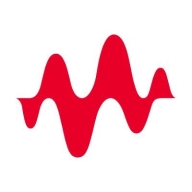

Splunk Observability Cloud and Eggplant Test compete in monitoring and testing tools. Splunk tends to excel in real-time problem-solving and scalability, while Eggplant Test is favored for its superior image recognition and cross-platform capabilities.
Features: Splunk Observability Cloud offers advanced reporting capabilities, customizable dashboards, and robust application performance monitoring. Eggplant Test stands out with its image recognition, OCR technology, and cross-platform automation capabilities.
Room for Improvement: Splunk Observability Cloud needs to address high costs, complicated configuration, and improve integration capabilities. Eggplant Test users suggest enhancing the user interface, increasing stability, and adding event-handling features.
Ease of Deployment and Customer Service: Splunk Observability Cloud supports various deployment environments, including on-premises and public clouds, with strong customer service, though support quality varies. Eggplant Test supports on-premises setups with responsive but occasionally inconsistent technical support.
Pricing and ROI: Both products are expensive. Splunk's data volume-based pricing is justifiable due to its features, but some users find it prohibitive. Eggplant's high pricing is justified by feature benefits, providing ROI through reduced manual testing costs.
Using Splunk has saved my organization about 30% of our budget compared to using multiple different monitoring products.
Anyone working in front-end management should recognize the market price to see the true value of end-user monitoring.
Eggplant Test offers 24x7 support.
They often require multiple questions, with five or six emails to get a response.
Support from Splunk is not very helpful because Splunk doesn't have a dedicated APM; they only have one APM engineer in Korea.
They did respond to us, but they did not explicitly inform us about the feature's absence.
We've used the solution across more than 250 people, including engineers.
I would rate its scalability a nine out of ten.
The issue is mainly about pricing because if they want to monitor more, it costs money.
I would rate its stability a nine out of ten.
We rarely have problems accessing the dashboard or the page.
Unlike NetScout or regular agents for APM, RUM has many problems during the POC phase because customer environments vary widely.
The two-system architecture that we currently follow could be better replaced with a one-system architecture.
There is room for improvement in the alerting system, which is complicated and has less documentation available.
Improvements in dashboard configuration, customization, and artificial intelligence functionalities are desired.
Customers sometimes need to create specific dashboards, particularly for applicative metrics such as Java and process terms.
Splunk is a bit expensive since it charges based on the indexing rate of data.
It appears to be expensive compared to competitors.
Splunk is a little expensive, however, it is in line with the current market pricing.
It can auto-heal the test cases and suggest new paths for testing, enhancing our ability to automate end-to-end journeys across various applications.
Splunk provides advanced notifications of roadblocks in the application, which helps us to improve and avoid impacts during high-volume days.
For troubleshooting, we can detect problems in seconds, which is particularly helpful for digital teams.
It offers unified visibility for logs, metrics, and traces.


Across every industry, digital transformation is top of mind. New methods of developing software are driving fast change, and test teams are feeling the pressure. Increasing demand to release faster while maintaining the highest levels of quality is making the testing process more complex and harder to scale.
With AI-powered testing, Eggplant’s test and automation intelligence delivers the coverage you need to optimize the user experience, speed up release cycles, and improve your quality assurance process. Discover a fast, secure, and easy-to-use solution that tests any kind of software on any platform or device.
Splunk Observability Cloud offers sophisticated log searching, data integration, and customizable dashboards. With rapid deployment and ease of use, this cloud service enhances monitoring capabilities across IT infrastructures for comprehensive end-to-end visibility.
Focused on enhancing performance management and security, Splunk Observability Cloud supports environments through its data visualization and analysis tools. Users appreciate its robust application performance monitoring and troubleshooting insights. However, improvements in integrations, interface customization, scalability, and automation are needed. Users find value in its capabilities for infrastructure and network monitoring, as well as log analytics, albeit cost considerations and better documentation are desired. Enhancements in real-time monitoring and network protection are also noted as areas for development.
What are the key features?In industries, Splunk Observability Cloud is implemented for security management by analyzing logs from detection systems, offering real-time alerts and troubleshooting for cloud-native applications. It is leveraged for machine data analysis, improving infrastructure visibility and supporting network and application performance management efforts.
We monitor all Digital Experience Monitoring (DEM) reviews to prevent fraudulent reviews and keep review quality high. We do not post reviews by company employees or direct competitors. We validate each review for authenticity via cross-reference with LinkedIn, and personal follow-up with the reviewer when necessary.